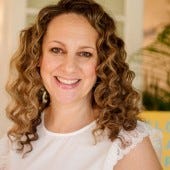Strategies for Caterers to Improve Cash FlowStrategies for Caterers to Improve Cash Flow
October 22, 2019

Cash is King. This adage rings true for small businesses worldwide. And, with the seasonality of events, it's something that catering companies certainly feel at various points of the year. To get better control of your cash flow, you'll want to incorporate these strategies.
Create a cash flow plan.
Many catering companies operate with a strong sales goals and expense budget. But, a cash flow plan takes it one step further. I encourage you to create a plan that plots out the cash you expect to have coming in and going out over the next two years.
A cash flow plan helps you see exactly where your financial peaks and valleys are in your business. You'll be better able to plan your big investments, like the range and fridge you want to replace and see when your flow goes slow.
Streamline your clients' payment schedules.
With a cash flow plan you may begin to see that cash begins to dip in certain months of the year. In the Northern United States, it's not unusual for me to see dips in cash balances for January through March.
Registration is NOW OPEN for Catersource 2020, co-located with The Special Event! Click here for more information or to register!
Sometimes cash slowness is so severe that a company takes on debt to make it through. Hey – there's no judgment here! We've all been there. But, there are ways you can stop the reliance on this crutch and end the cycle.
Many catering companies ask clients for two payments: a deposit upfront and a final payment in the weeks leading up to the event. However, there is no reason you can't divvy this up into three payments. This 3-payment strategy can be beneficial at streamlining your cash inflow.
If you see this dip happen, or you know from experience the seasons when business is slow, ask your client for this 'middle payment.’' And, force it to happen in these slow months. You can do it on an ad hoc basis too. There's nothing wrong with asking for 1/3 upfront in September, 1/3 in February, and 1/3 in June. You can decide how to work your client's payment schedule in your favor – even if just for a limited period of time.

Create a savings cushion.
If your seasons are wonky, or the economy spirals downward – which it will eventually do – having a savings cushion will be the best thing you can do for your business. Businesses with a strong cash cushion cannot only weather volatility but also can take more significant risks. Every little decision you make won't derail your business if you have a savings cushion. It may temporarily veer you off course for a little bit. But, you'll be able to steady yourself soon enough.
So, how much do you need to save? It all depends on how long your slow season is. If you tend to have a big dip in cash inflow from January through February, then save for two month's worth of expenses. If you have a slow season from June through August, then save for three months. You can always do more, based on your level of comfort. But, it'll take you a while to get there, so start somewhere and slowly grow that cash.
Start at the beginning and create that cash flow plan. It's hard to hit a target if you don't know where it is. You'll be able to control your flow and make firm decisions with intention. If you don't have a financial strategy, you're likely operating blindly. And, you can do so much better if you know what your money is doing.





.png?width=700&auto=webp&quality=80&disable=upscale)

